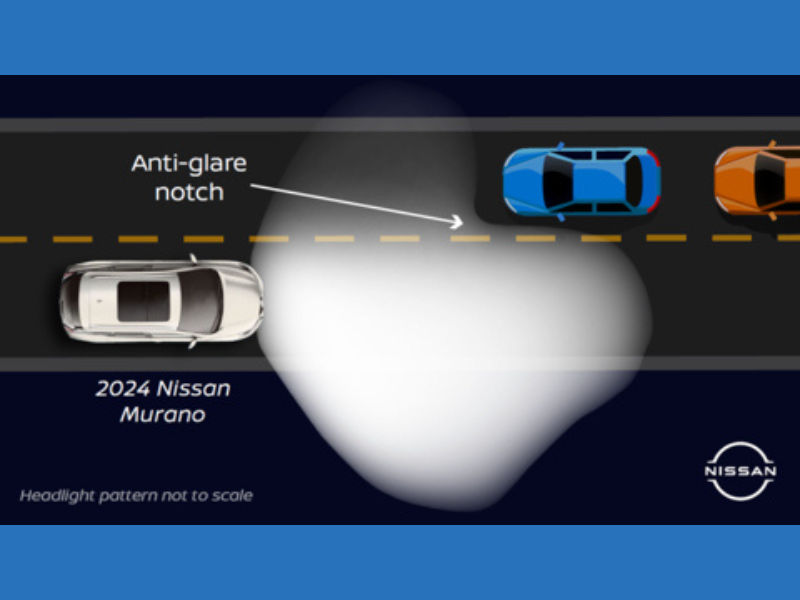The increased illumination of LED (light-emitting diode) headlights creates a dilemma: It allows drivers to see more clearly ahead but can cause additional glare for drivers in the oncoming lane. This has led to growing frustrations for nighttime drivers — especially during the dark winter months.
With more than 90% of accidents caused by human error, Nissan is enhancing headlight technology as part of its mission to protect people and help drivers avoid risky situations.
Brad Chisholm an engineer on the exterior Lights, Mirrors, and Wipers team at Nissan Technical Center North America in Farmington Hills, Michigan says that with advancements in LED technology, Nissan engineers are trying to create headlights that enhance visibility for everyone.
“LEDs can help people both to see and be seen,” he said.
Precise patterns ease the strain on other drivers’ eyes
Over the last two decades, LED headlights have gradually replaced halogen and high-intensity discharge (also known as xenon) lamps. They’re easy to distinguish: Halogen lamps emit a warm, yellow light, while LEDs emit a cool, white light. In addition to being brighter, LEDs are about 80% more energy efficient and last many times longer than halogen bulbs.
Critically, Chisholm says, LEDs also allow engineers to design a precise low-beam headlight pattern that both illuminates the road and reduces glare. This “anti-glare notch” makes it easier for oncoming drivers to see without being dazzled by approaching lights. The strongest, brightest light is aimed toward the lane of travel, while the dimmer light is cast toward the oncoming lanes.
Engineers create these notches by directing the light in specific directions and creating physical barriers within the headlight housing to block the light in other directions. While these notches exist with halogen lamps and are required by regulations, they are more well-defined with LEDs.

“We can carve out that area of the oncoming lane with everything around it being bright and the inside being super dark,” Chisholm said. “We’re able to push the limits using LEDs.”
Nissan offers LEDs as standard or optional equipment on all 2024 U.S. models. Additionally, High Beam Assist – which automatically turns high beams on or off based on traffic and lighting conditions – is included with Nissan Safety Shield 360.
Achieving these results is an enormous effort – Chisholm says a Nissan headlight typically undergoes at least 300 tests before it is approved for production.
A gateway to daring design
LEDs also allow designers to push the limits of design, largely because they are smaller than halogen bulbs despite being more than twice as bright.
Recently, LED headlights have become even smaller. This is because though LEDs produce far less heat than halogen bulbs, they still generate some heat that is absorbed by a piece of aluminum called a “heat sink.” Over the past few years, heat sinks have shrunk due to LEDs becoming even more efficient, allowing designers to dream bigger.
“It gives us freedom for styling,” Chisholm said. “We’re able to do more with LEDs than we were able to do with halogen bulbs, like creating light pipes and swoops in taillamps and daytime running lights.”
A brighter road ahead
Chisholm is excited about the future, especially since adaptive driving beam headlights have been approved for use in the U.S. These lights have the potential to move the anti-glare notch in real time to adjust for oncoming vehicles’ positions.
“That’s something I’m stoked about,” Chisholm said.
As halogen lamps gradually disappear, Nissan engineers are trying to ensure the newest generation of LED headlights continues to assist drivers without dazzling those facing them.





















